Shih Tzu Dog Enhanced Overview: History, Care, and Unique Traits
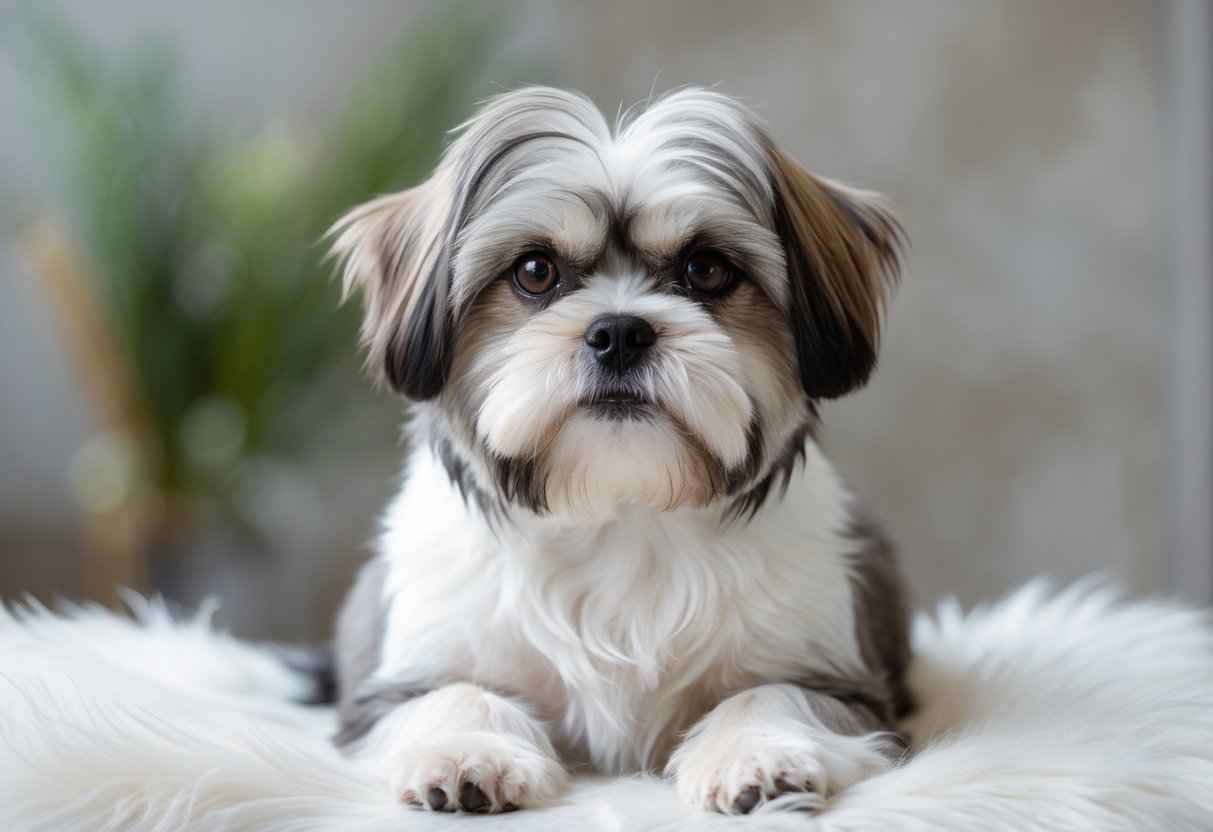
The Shih Tzu is a small dog breed known for its luxurious coat and friendly personality. It has a long history as a companion animal, originally bred to be a royal lapdog in China. This breed stands out for being affectionate, social, and relatively easy to care for with regular grooming.
Shih Tzu Dogs bring a playful yet calm presence to a home. They adapt well to families and small living spaces, and their moderate energy makes them suitable for many owners. While they need grooming and health care, their lifespan generally ranges from 10 to 16 years, making them long-term companions.
Understanding their history, temperament, and care needs can help potential owners decide if this breed fits their lifestyle. This overview will clarify what makes the Shih Tzu unique and what to expect when bringing one into the home.
Key Takeways
- The Shih Tzu is a friendly and adaptable small breed.
- Regular grooming and health care are important for their wellbeing.
- Their history as royal companions shapes their calm and social nature.
Shih Tzu Enhanced Overview
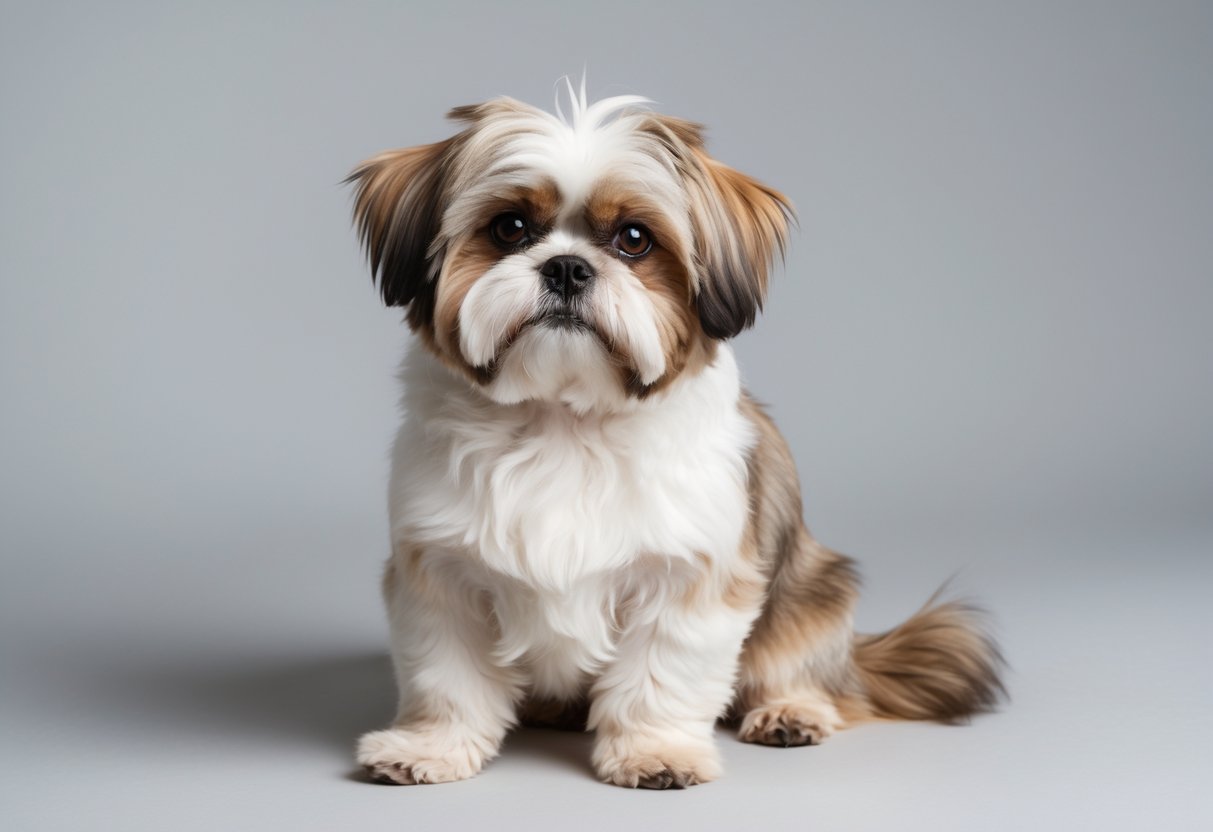
The Shih Tzu is a small dog breed known for its distinct appearance and friendly nature. It fits well in homes of many types and has a long history as a cherished companion. This breed’s traits combine elegance, affection, and a calm temperament that make it a popular choice.
What Sets the Shih Tzu Apart
The Shih Tzu is recognized by its luxurious, long coat and distinct facial structure, often described as “smooshed” due to its short muzzle. This gives it a unique look compared to other toy breeds. It typically stands 9 to 11 inches tall and weighs between 9 and 16 pounds.
Its personality is gentle and social. The breed shows affection readily and tends to bond closely with family members. However, Shih Tzus require regular grooming to keep their coat healthy and prevent matting.
Health-wise, they can be prone to some breathing difficulties due to their brachycephalic head shape. Owners should be aware of this and monitor their dog for signs of distress, especially in hot weather.
Shih Tzu’s Role as a Companion Dog
The Shih Tzu has been bred mainly as a companion dog, a role it performs well due to its friendly and calm temperament. It thrives on human attention and often seeks out laps to sit on or cuddle with.
This breed enjoys moderate energy activities but does not need intense exercise. Its size and nature make it suitable for apartment living or homes without large yards.
Shih Tzus generally do well with children and other pets when socialized properly early on. Their nature is more companion-focused rather than work-oriented or sporty.
Lap Dog Nature and Toy Breed Status
As a classic lap dog, the Shih Tzu is built for comfort and closeness with people. Its small size and affectionate temperament classify it firmly in the toy breed group.
Toy breeds like the Shih Tzu were often bred to be indoor pets and status symbols. This one carries that history, as it was once favored by royalty in China.
Owners should expect some common toy breed traits, including a need for consistent grooming and some snorting or snoring due to facial shape. Despite these, its loyal and loving nature maintains its place as a popular lap dog worldwide.
Origins and Historical Development
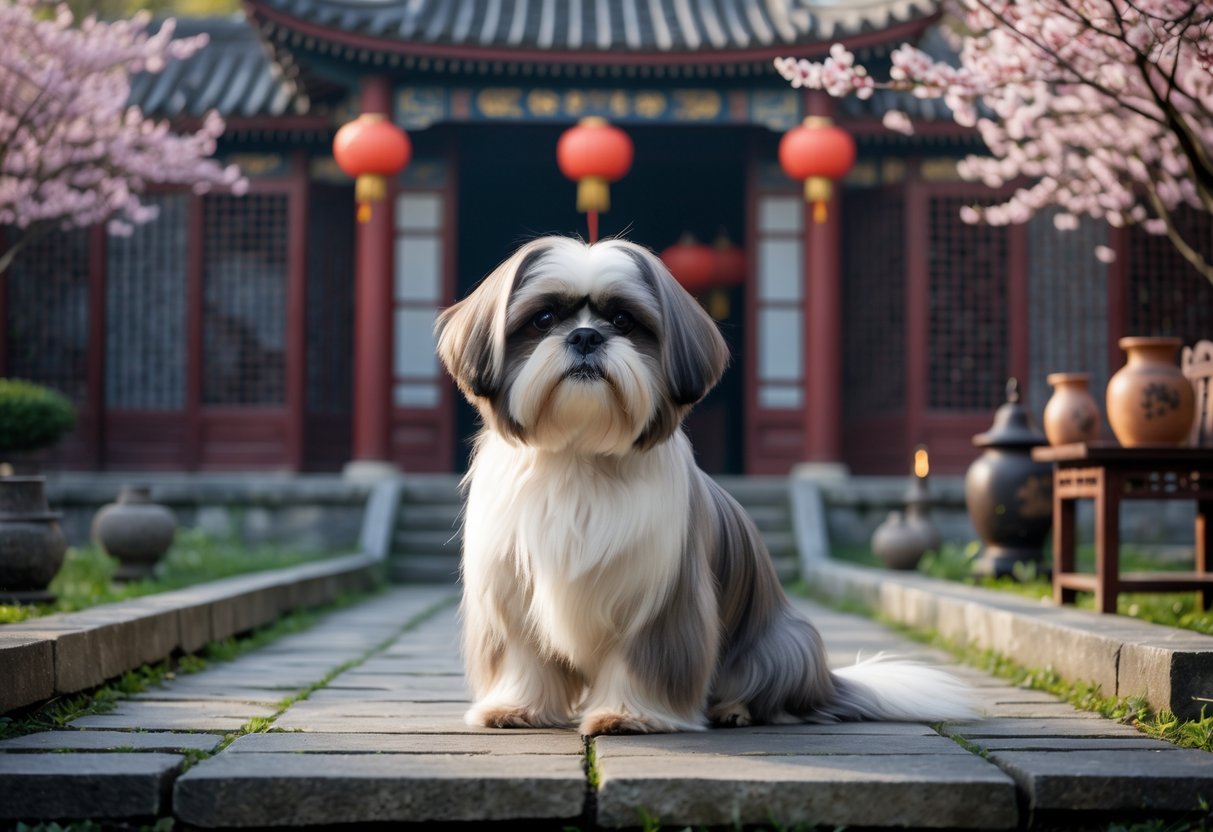
The Shih Tzu has a rich background tied to ancient cultures and royal courts. Its development involved careful breeding influenced by other breeds and later formal recognition by kennel organizations.
Ancient Roots in China and Tibet
The Shih Tzu descended from Tibetan dogs similar to the Lhasa Apso. These dogs were prized in Tibetan monasteries and believed to embody spiritual qualities. They were given as special gifts during long journeys from Tibet to China.
The breed gained fame during China’s Ming Dynasty, where it became a favorite among royalty. Court artists often painted Shih Tzus, and breeding was controlled by palace eunuchs. The dogs were bred to resemble small lions, important in Buddhist symbolism.
After the 1949 Communist revolution, many Shih Tzus in China were killed because of their association with wealth. Luckily, a few survived outside China and helped preserve the breed.
Influence of the Pekingese and Other Breeds
The Shih Tzu is related to the Pekingese and shares some traits with this breed. The Dalai Lama gave similar dogs to the Chinese Dowager Empress, who created a breeding program to emphasize the Shih Tzu’s unique traits.
Some breeding mixed the Shih Tzu, Pekingese, and Pugs. In England, a black and white Pekingese was controversially introduced into Shih Tzu bloodlines in the 1950s. These breeds influenced the Shih Tzu’s size, coat, and facial features.
Although the Shih Tzu looks distinct today, its development involved blending traits from these closely related breeds to maintain its royal and companion qualities.
Introduction to Western Kennel Clubs
The modern Shih Tzu’s lineage mainly comes from a small group of dogs brought into England and Scandinavia between 1928 and 1952. Lady Brownrigg and some British officers helped save the breed by importing these dogs.
In the U.S., multiple Shih Tzu groups joined to form the American Shih Tzu Club in 1963. The breed was accepted into the American Kennel Club (AKC) Stud Book in 1969, which helped standardize its appearance and promote its popularity.
Since then, the Shih Tzu has been bred mainly as a companion dog, admired for its royal heritage and charming look. The AKC recognition has encouraged careful breeding to preserve classic traits.
Physical Appearance and Breed Standards
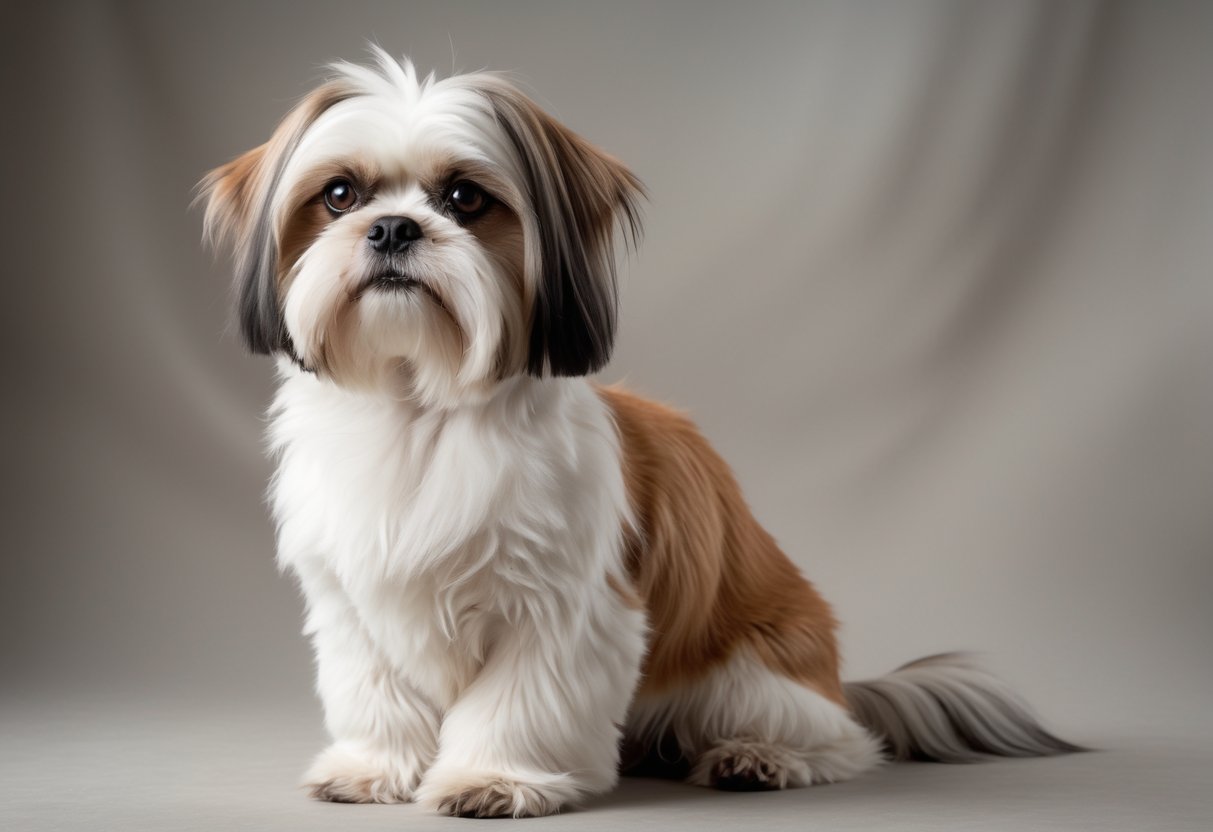
The Shih Tzu is a small toy breed known for its sturdy build and elegant appearance. Its unique coat, size, and facial features set precise breed standards that define its look and character.
Size and Structure
The Shih Tzu stands no taller than 27 cm (about 10.5 inches) at the shoulders. Its weight typically ranges from 4.5 to 8 kilograms (10 to 18 pounds), with an ideal weight between 4.5 and 7.5 kilograms (10 to 16 pounds).
The body is longer than it is tall, with a broad chest and well-coupled structure. Legs are short and muscular, matching the breed’s compact and firm stance. The shoulders slope gently, supporting a neck that arches gracefully, allowing the head to be held proudly.
The tail is heavily plumed, carried high, and curves over the back, balancing the dog’s silhouette.
Coat Texture, Colors, and Grooming Needs
The Shih Tzu wears a long, dense double coat that is moderately soft with slight waves allowed, but no curls or woolly texture. It should never restrict movement or vision.
Coat color can vary widely, with all colors allowed except merle. Parti-colors with a white blaze on the forehead or a white tip on the tail are especially desirable.
Regular grooming is vital. The hair on the head is often tied up to keep it out of the eyes. The coat needs frequent brushing to prevent matting and maintain its health and shine.
Distinctive Facial Features
The Shih Tzu’s face is one of its most defining traits. It has a broad, round head with a “chrysanthemum-like” muzzle where the hair grows upward around the nose. This feature does not interfere with vision.
The nose is square, short, and broad, usually black except in liver-colored dogs where a dark liver nose appears. It sits level or slightly tilted but should never point downwards, as downturned noses are undesirable.
Eyes are large, dark, round, and well-set apart, giving a warm expression without showing the white of the eyes. Ears are large with long hair, blending into the neck’s coat. The mouth is wide and slightly undershot or level.
Each feature reflects the breed’s mix of charm and strength while following strict standards.
Personality, Temperament, and Mental Stimulation
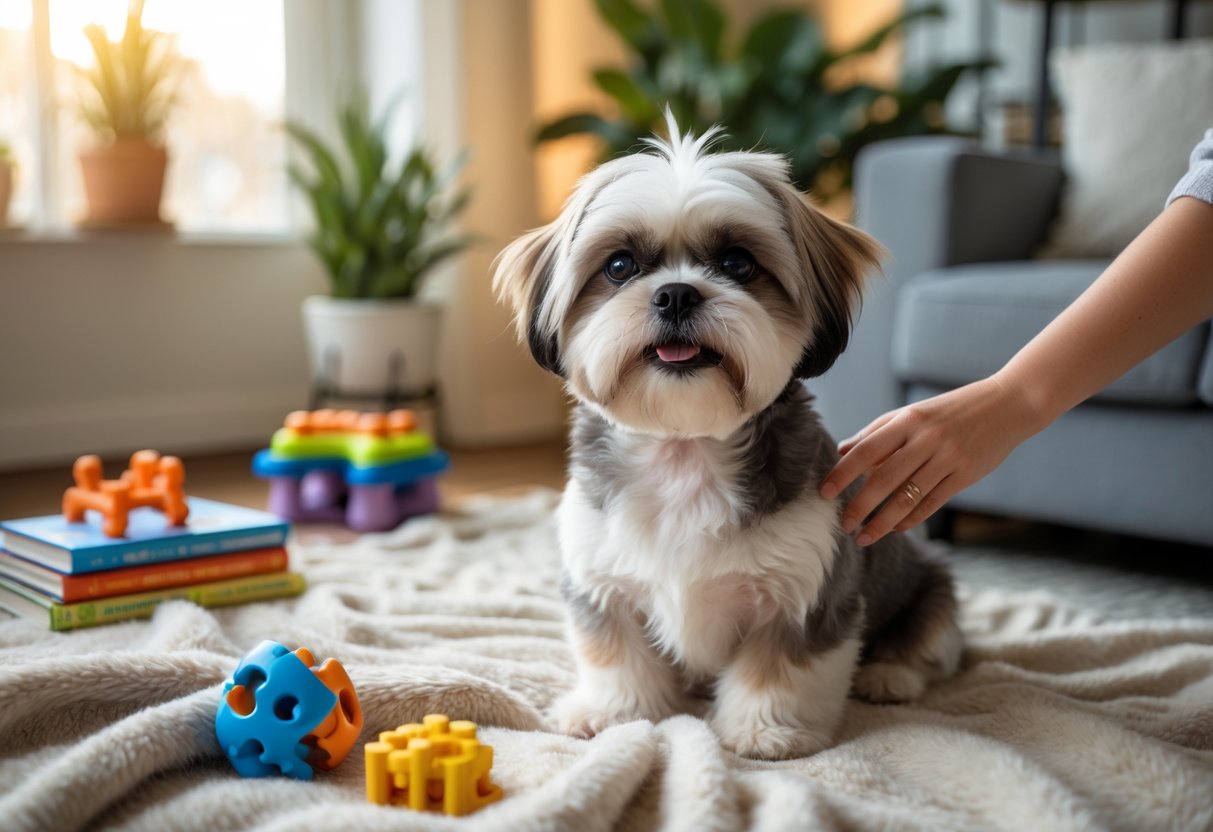
The Shih Tzu is a small, affectionate dog known for its friendly and adaptable nature. This breed fits well in family settings and benefits greatly from early training and regular mental exercise. Understanding its key traits can help owners provide the right care and environment.
Key Temperamental Traits
Shih Tzus are typically affectionate and outgoing. They enjoy being around people and often seek attention and companionship. Their temperament is generally calm but can be playful when engaged.
They are friendly with adults, children, and other pets, making them a good choice for households with multiple members. However, some Shih Tzus may show signs of stubbornness, so patience during training is important.
Early socialization shapes their behavior, helping reduce anxiety and fearfulness. This breed is sensitive, so positive reinforcement works best to encourage good manners.
Compatibility as Family Dogs
Shih Tzus adapt well to apartment living and are suited for families who can meet their social and physical needs. They thrive in environments where they receive regular interaction and affection.
They typically get along with children but may need supervision with very young kids to avoid accidental injury. Their gentle temperament also suits homes with other small pets.
Because they are companion dogs, they prefer being included in family activities rather than left alone for long periods. Their need for connection makes them loyal but prone to separation anxiety if isolated.
Training Approaches and Socialization
Training should start early to build a well-adjusted Shih Tzu. Basic obedience is essential, using rewards to motivate them since harsh methods can cause fear or resistance.
Socializing a Shih Tzu means introducing it to various people, places, and animals. This helps the dog remain confident and friendly, avoiding territorial or shy behavior.
Consistency is key during training. Short sessions work best because Shih Tzus have limited attention spans. Patience and kindness encourage better learning and long-term good habits.
Importance of Mental Stimulation
Mental exercise is crucial for a Shih Tzu’s health and happiness. Without mental challenges, they may become bored, which can lead to destructive behavior like chewing or excessive barking.
Owners can provide stimulation through puzzle toys, interactive games, and new training exercises. These activities help maintain sharpness and reduce anxiety.
Shih Tzus are intelligent dogs that respond well to tasks requiring problem-solving. Regular mental stimulation supports their well-being and helps maintain a balanced temperament.
Health, Longevity, and Care Essentials
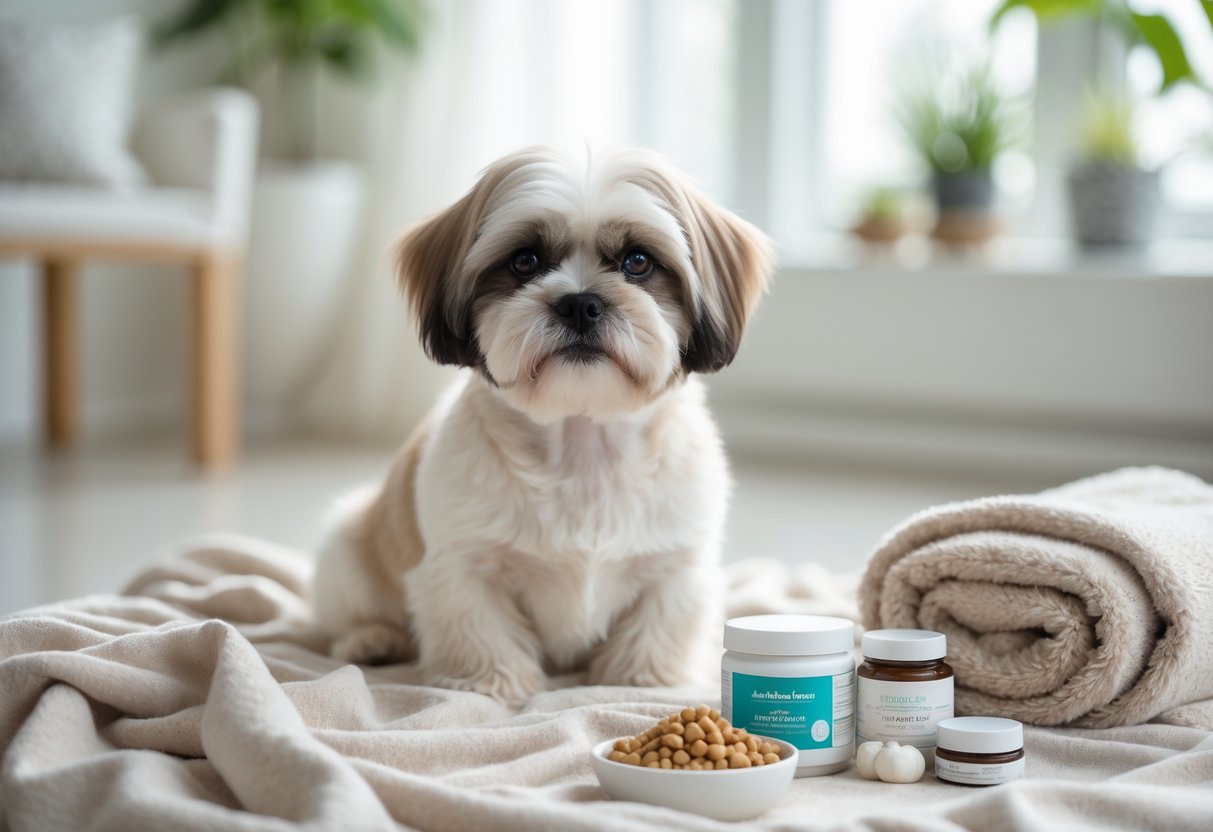
Proper care of a Shih Tzu includes understanding its health risks, providing the right diet and exercise, and taking preventive steps to extend its life. Attention to detail in these areas helps the dog stay healthy and active for many years.
Common Health Issues and Genetic Concerns
Shih Tzus may face specific health problems like patellar luxation, where the kneecap slips out of place, causing discomfort and mobility issues. Another concern is intervertebral disc disease, which can lead to back pain and nerve problems. Regular vet check-ups are crucial to detect these early.
The breed is also prone to eye issues, such as tearing and infections, because of their facial shape. Dental problems are common due to their small mouths, so daily teeth cleaning is important.
Genetic testing and responsible breeding help reduce risks of inherited diseases. Owners should watch for signs like limping, difficulty walking, or sudden changes in behavior and seek medical advice immediately.
Exercise and Nutrition Needs
Shih Tzus need moderate exercise to maintain a healthy weight and muscle tone without stressing their joints or back. Short daily walks and gentle play sessions are ideal.
Their diet should consist of high-quality dog food formulated for small breeds. Shih Tzus often have sensitive stomachs, so the food must be easy to digest and balanced in nutrients.
Providing fresh, filtered water helps prevent urinary and kidney problems. Avoid overfeeding to reduce the risk of obesity, which can worsen joint and spine issues like patellar luxation and disc disease.
Preventive Care and Lifespan
Consistent preventive care is key to a Shih Tzu’s longevity, often 10 to 16 years. This includes parasite control, regular vaccinations, and dental cleanings.
Spaying or neutering is recommended to avoid certain health problems. Microchipping helps in identification if the dog is lost.
Routine grooming prevents skin infections caused by their long coat. Owners should clean folds and eyes daily to stop irritation.
By combining these measures, owners improve their Shih Tzu’s chances for a longer, healthier life.
Shih Tzu Puppies and Responsible Ownership
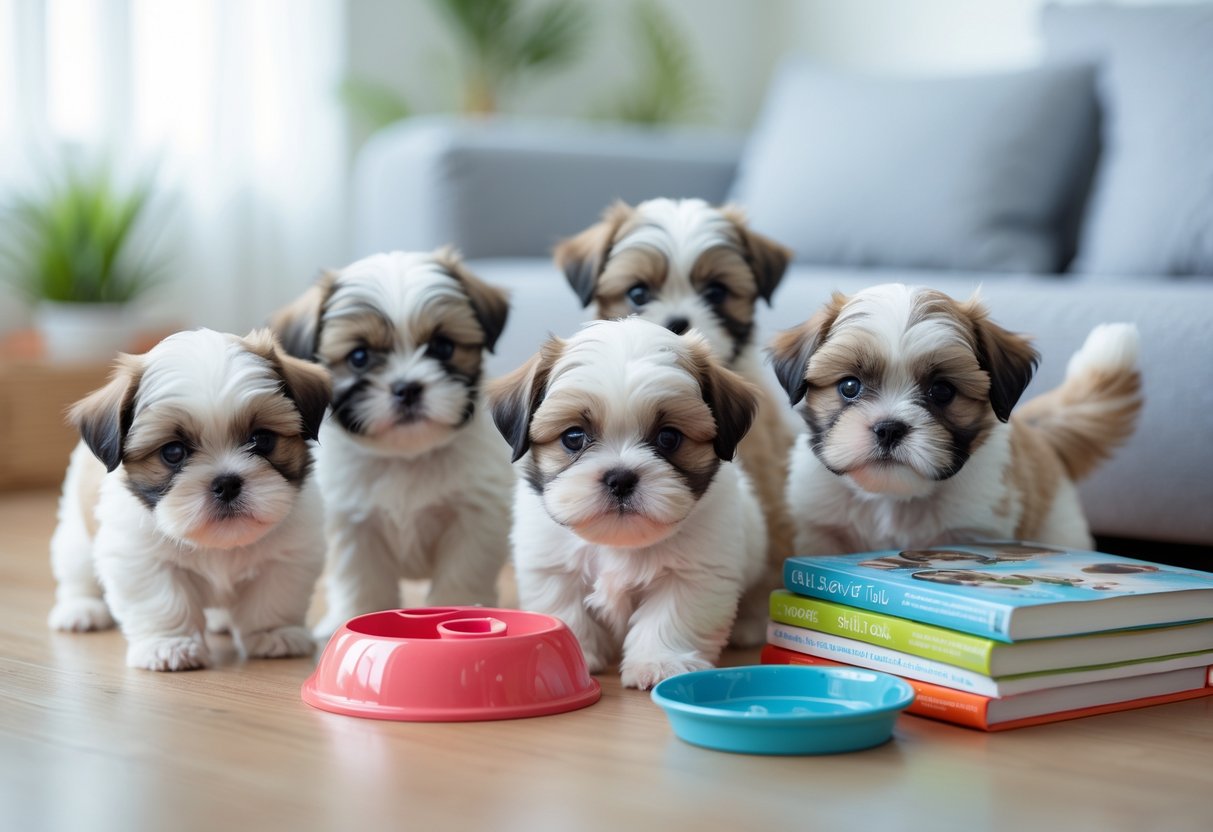
Choosing and caring for a Shih Tzu puppy requires careful attention to health, proper early care, and knowledge about reliable sources. Responsible ownership involves providing the puppy with a safe environment, meeting their specific needs, and understanding the importance of ethical breeding and registration.
Selecting a Healthy Puppy
When selecting a Shih Tzu puppy, health should be the top priority. The puppy should have bright eyes, clean ears, and a shiny coat without bald spots or signs of irritation. It is important to observe the puppy’s behavior—healthy puppies are active and curious, not lethargic or overly fearful.
Ask to see the puppy’s parents and veterinary records. A responsible breeder will provide health clearances showing tests for common Shih Tzu issues like respiratory problems and eye conditions. Puppies from reputable breeders are less likely to have genetic diseases.
Avoid buying puppies from sources that do not allow interaction with the mother or do not provide health documentation.
Puppy Care and Early Development
Caring for a Shih Tzu puppy starts with establishing a daily routine for feeding, grooming, and socialization. Early grooming is important since the breed has a long coat prone to matting. Gentle brushing several times a week helps the puppy get used to care routines.
Nutrition should be tailored to small breed puppies, focusing on high-quality food that supports growth and energy needs. Regular vet visits during the first months help monitor weight, vaccinations, and overall development.
Socializing the puppy with family members, other pets, and new environments gradually helps to reduce future anxiety and supports training success.
Adoption, Breeders, and AKC Registration
Choosing between adoption and buying from a breeder depends on personal preference and availability. Rescue organizations sometimes have Shih Tzus in need of homes, offering an option that also helps reduce overpopulation.
If purchasing, selecting an American Kennel Club (AKC) registered breeder ensures the dog’s lineage is verified and their breeding follows specific standards for health and temperament.
AKC registration gives access to resources for training and health management. Confirm that the breeder is transparent about the puppy’s background and offers ongoing guidance to new owners.
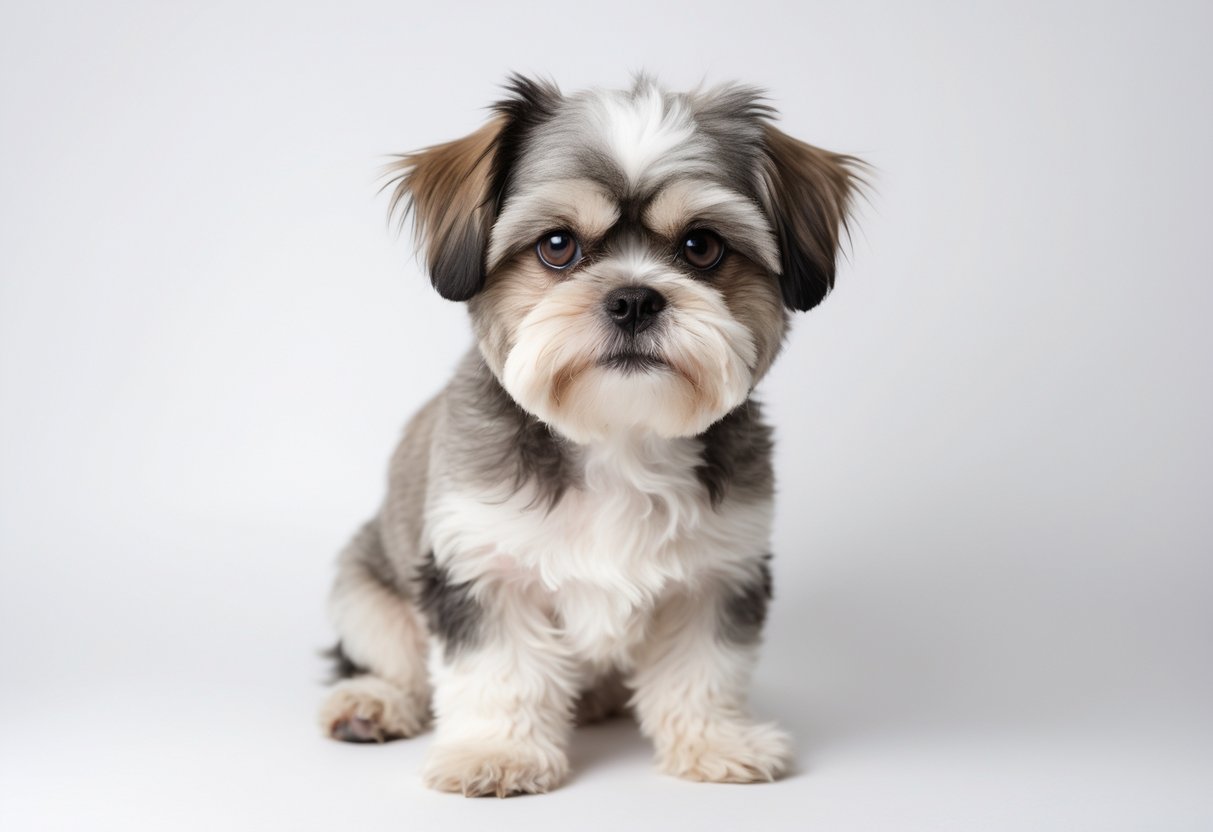
Frequently Asked Questions
Shih Tzus are known for being friendly and affectionate. They usually live between 10 and 16 years and come in many coat colors. The price of Shih Tzu puppies varies, and mixing them with other breeds can change their traits. Life expectancy may differ slightly based on gender.
